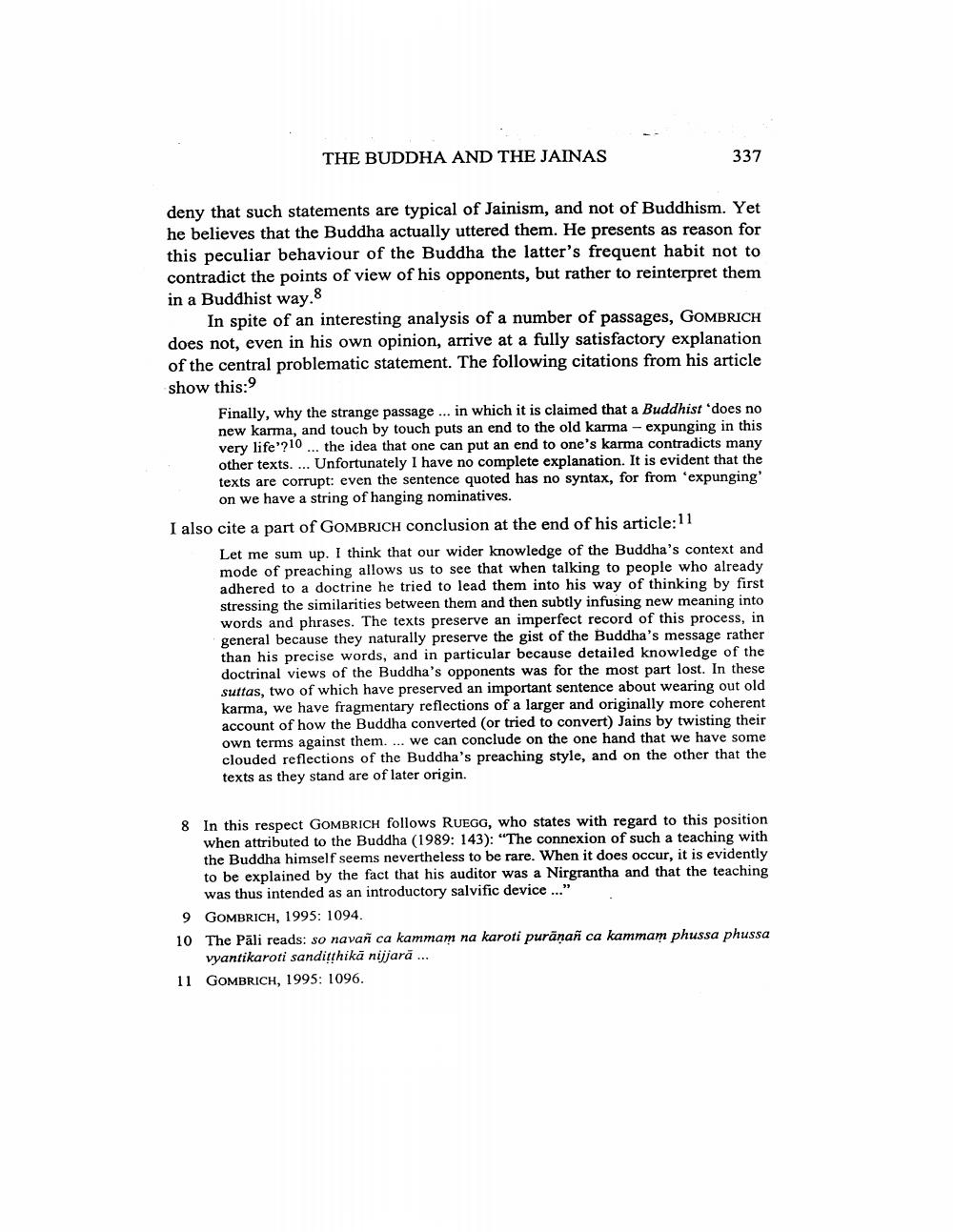________________
THE BUDDHA AND THE JAINAS
337
deny that such statements are typical of Jainism, and not of Buddhism. Yet he believes that the Buddha actually uttered them. He presents as reason for this peculiar behaviour of the Buddha the latter's frequent habit not to contradict the points of view of his opponents, but rather to reinterpret them in a Buddhist way.8
In spite of an interesting analysis of a number of passages, GOMBRICH does not, even in his own opinion, arrive at a fully satisfactory explanation of the central problematic statement. The following citations from his article show this:
Finally, why the strange passage ... in which it is claimed that a Buddhist does no new karma, and touch by touch puts an end to the old karma - expunging in this very life'?10 ... the idea that one can put an end to one's karma contradicts many other texts. ... Unfortunately I have no complete explanation. It is evident that the texts are corrupt: even the sentence quoted has no syntax, for from 'expunging'
on we have a string of hanging nominatives. I also cite a part of GOMBRICH conclusion at the end of his article:11
Let me sum up. I think that our wider knowledge of the Buddha's context and mode of preaching allows us to see that when talking to people who already adhered to a doctrine he tried to lead them into his way of thinking by first stressing the similarities between them and then subtly infusing new meaning into words and phrases. The texts preserve an imperfect record of this process, in general because they naturally preserve the gist of the Buddha's message rather than his precise words, and in particular because detailed knowledge of the doctrinal views of the Buddha's opponents was for the most part lost. In these suttas, two of which have preserved an important sentence about wearing out old karma, we have fragmentary reflections of a larger and originally more coherent account of how the Buddha converted (or tried to convert) Jains by twisting their own terms against them. ... we can conclude on the one hand that we have some clouded reflections of the Buddha's preaching style, and on the other that the texts as they stand are of later origin.
8 In this respect GOMBRICH follows RUEGG, who states with regard to this position
when attributed to the Buddha (1989: 143): "The connexion of such a teaching with the Buddha himself seems nevertheless to be rare. When it does occur, it is evidently to be explained by the fact that his auditor was a Nirgrantha and that the teaching
was thus intended as an introductory salvific device ..." 9 GOMBRICH, 1995: 1094. 10 The Pāli reads: so navan ca kammam na karoti puränañ ca kammam phussa phussa
vyantikaroti sanditthikā nijjara ... 11 GOMBRICH, 1995: 1096.




